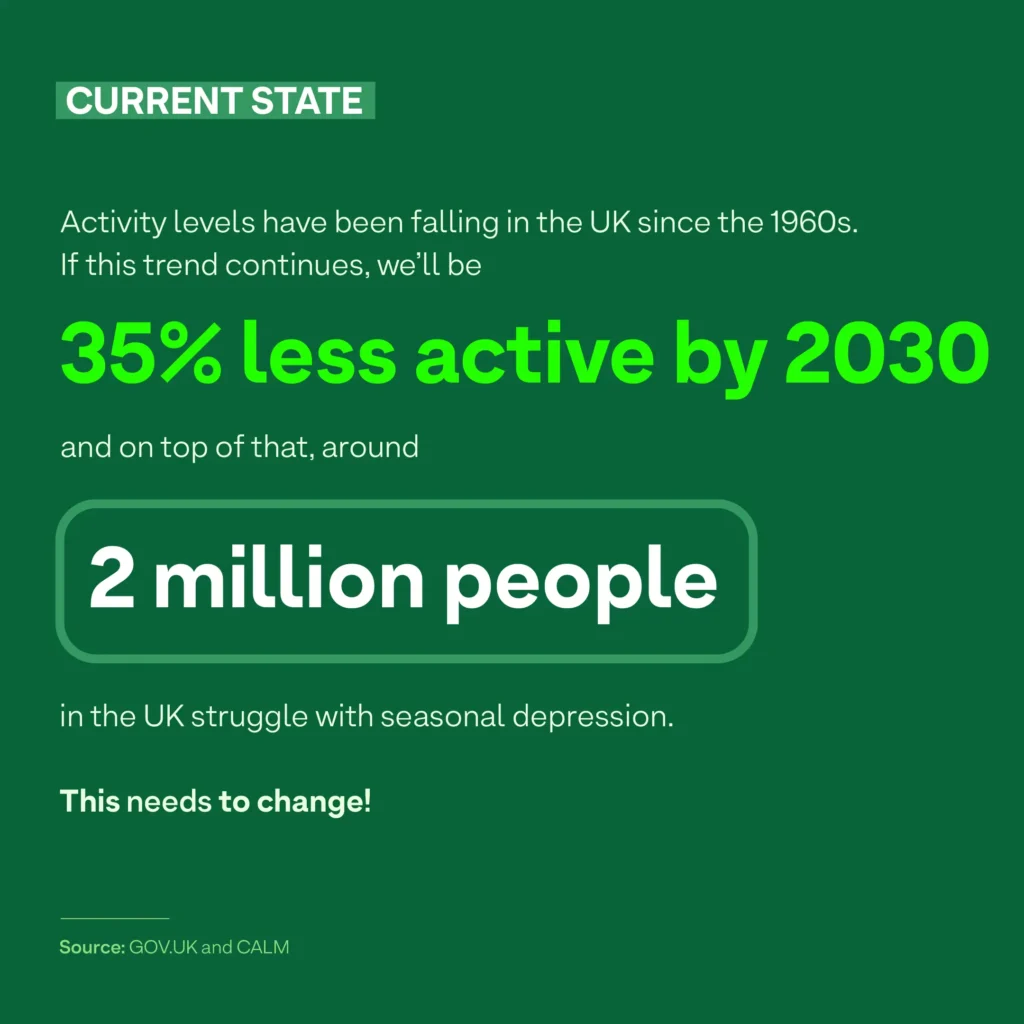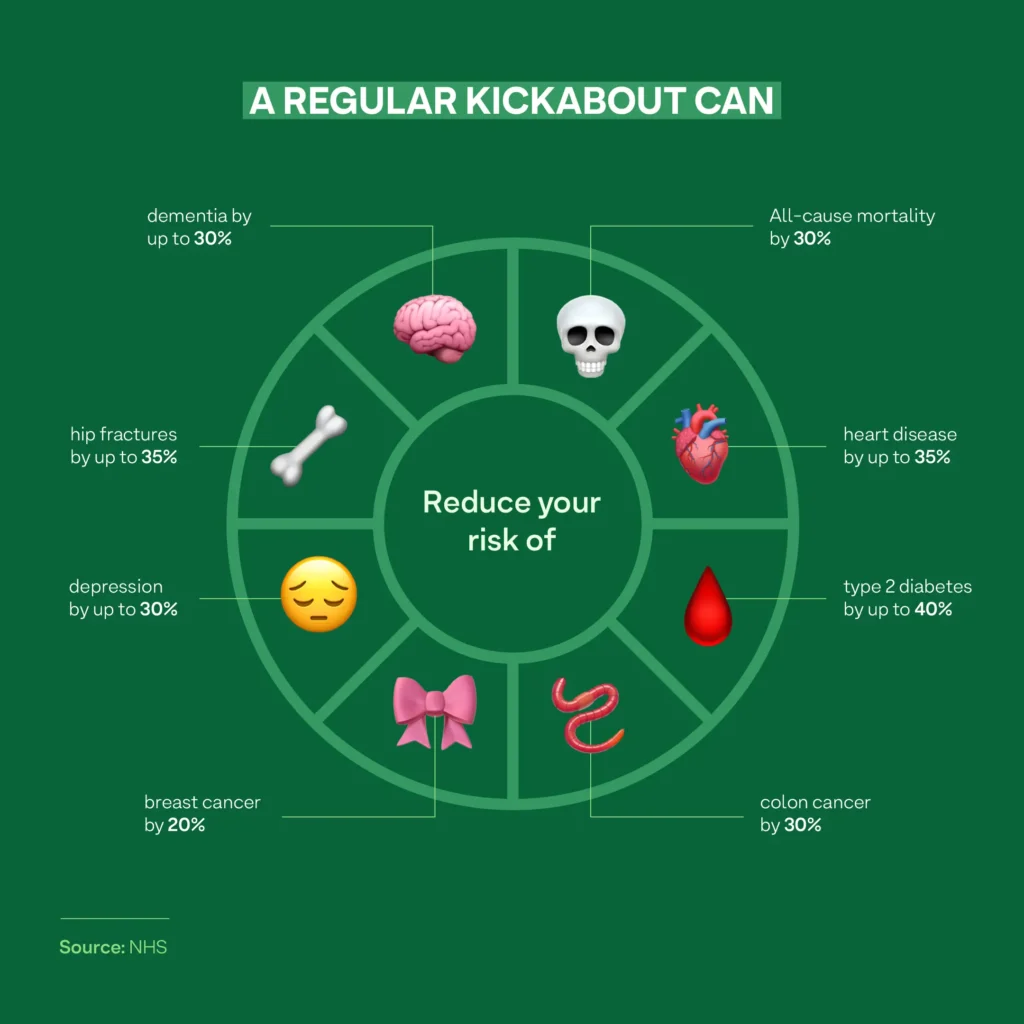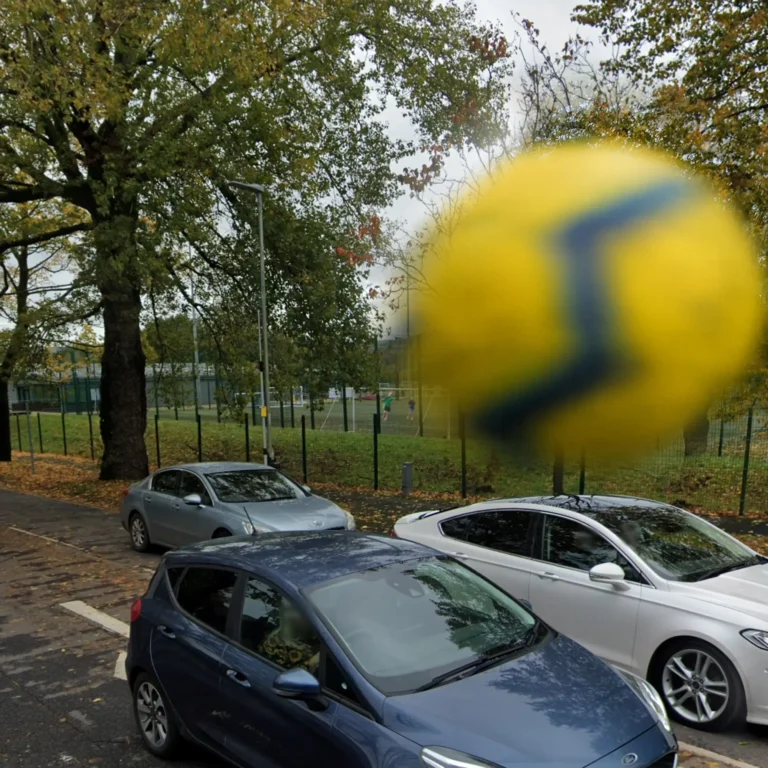Local football programmes can make a real difference to public health. In the UK many people do too little exercise. Sport England reports that only about 63.7% of adults meet the official activity guidelines (150+ minutes/week). Even more worryingly, physical inactivity contributes to 1 in 6 deaths in the UK. That means people are dying earlier from conditions we could help prevent by moving more.
Inactive lifestyles raise the risks of heart disease, stroke, type 2 diabetes and poor mental health. It costs our NHS about £0.9 billion a year for illnesses linked to being sedentary. If current trends continue (we are already ~20% less active than in the 1960s), experts warn Britain will be 35% less active by 2030.

Simple kickabout can prevent many health problems and save lives. Indeed, NHS health information points out: ‘If exercise were a pill, it would be one of the most cost-effective drugs ever invented’. Football is the ultimate exercise because it raises your heart rate, improves fitness and unlike many workouts, it’s fun and social.
How Football improves physical health
Multiple studies show active people have far lower risks of chronic disease than those who sit around. For example, physically active adults have about 20–35% lower rates of heart disease and stroke compared to people who hardly exercise. They also have dramatically reduced risk of metabolic diseases: up to 40% lower risk of developing type 2 diabetes and about 50% lower risk of some cancers (e.g. colon cancer).
In practice, that means a recreational player who plays a weekly casual game can expect far better health outcomes than someone who never exercises. NHS data shows regular exercisers have up to 30% lower risk of early death. They also suffer far fewer injuries and age-related health issues. For instance, up to 30% fewer hip fractures and 30% fewer falls among active older adults.
Football does things to your body most workouts don’t. Regular players tend to have ~20–35% lower rates of coronary heart disease and stroke and stronger lung capacity.
It also helps with weight and how your body handles sugar. You burn hundreds of calories without thinking and improve insulin sensitivity. This leads to lower rates of type 2 diabetes and obesity.
60 minutes of constant movement, even at a slower pace, can cut several cancer risks by about a third. In practice, football’s aerobic nature helps reduce colon, breast and other cancers by 20–30%.
The stop-start and jumping in football builds stronger muscles and bones. Over time, that means 30—68% fewer joint problems and fractures as you get older.
In summary, even swapping one inactive afternoon for a game of football can cut your risk of disease by a wide margin. One NHS estimate finds exercisers have up to a 30% lower chance of dying prematurely.

Football and Mental Wellbeing
The benefits of football go far beyond the body. Experts say team sports have a strong impact on mental health and social wellbeing. In particular, they help improve self-esteem and give you a sense of belonging, while also reducing depressive feelings by about 30%. Exercise releases endorphins that can lift your mood and being part of a team helps protect against loneliness. In fact, adults who play team sports in their local communities report greater life satisfaction than those doing solo activities.
Multiple real-world testimonies echo the data. For instance, retired players and busy professionals alike cite football as a ‘mental escape’ and a confidence-builder. The FA’s research on grassroots players finds that participants overwhelmingly feel football improves their motivation and social mixing. Many new female players often report the largest boosts in self-confidence through the game. People from low-income and under-served communities report even bigger health and confidence gains than the general population.
In other words, every casual game is a free mental health session and community meetup rolled into one. As a psychiatrist involved with Football For All noted, by ‘breaking down barriers to exercise and social networks’ the game becomes ‘one of the most effective interventions for mental health’.
Economic and social value of local football
One big reason football works for public health is because it delivers enormous economic and social returns. A recent FA survey valued grassroots football at around £10.8 billion per year. That includes £2.05 billion in direct economic activity. Players themselves spend an average of £325 per year on football (clubs, equipment, travel), which boosts local businesses and jobs. Grassroots football also generates about £8.7 billion in social value (happiness, community wellbeing).
Public health savings are a key part of this value. By preventing illness, local football saves healthcare costs. The FA estimates roughly £43.5 million a year in reduced GP visits alone. This is just a partial figure. It doesn’t even count savings from fewer hospital stays and emergency treatments. Sport England adds that every £1 spent on community sport returns £4.20 in benefits, largely through fewer sick days, lower medical bills and more productive citizens. In contrast, inactivity costs NHS and society about £7.4 billion per year in the UK.
Local football also delivers social impact that money alone cannot buy. By drawing in players of all ages and backgrounds, football bridges social divides. Numerous reports note a correlation between active community sport and lower crime or anti-social behaviour (young adults on the pitch are less likely to hang out on the streets).
For example, police forces in major UK cities have observed a crime drop in areas with strong social football programmes.
Finally, football’s popularity and reach amplify its value. In England there are over 15 million football players, a network unrivaled by most other sports. For a nation of 56 million, that means roughly 1 in 5 people play football regularly! Because of this scale, even modest improvements (like adding one more 3G pitch or starting one new weekly game) can involve hundreds of new participants and spread health benefits across families and neighbours.
The Football Association itself invests heavily in this backbone. About £180 million per year goes into English football development, roughly £1 million of which is spent each week on grassroots activities. This level of investment reflects confidence that local community games generate far more return for society.
Why Football for All should be part of the answer
At Football for All, our mission is to build happier, healthier communities through football. We’re a not-for-profit organisation that delivers inclusive football games in local communities. Since 2014 we’ve been growing fast. Every year we put on more games than the year before. As for July 2025, we organise over 2,500 games every month across 51 local authorities in the UK. That makes us one of the biggest football providers around and 61% of our sessions take place in areas that really need extra sport and social connection.

Every penny of the money people pay to play goes straight back into local football. We keep games affordable so cost is never a barrier. Football for All works closely with schools, football venues and volunteers to organise these sessions. The result is a network of casual games where anyone can join in.
We make sure football feels inclusive and welcoming. Our sessions are always open to all ages, genders, skill levels and backgrounds. This way we reach people who might never go near a gym or a competitive team, especially those who just want something simple and fun. We see it ourselves, once a few neighbours start playing, the word spreads and more people join in. This community momentum keeps our games going.
A Winning Prescription
In summary, local football is a remarkably effective public health intervention. It turns idle time into exercise and does so in a way that people love. The data are compelling, a community that plays together is healthier, happier and stronger. Every game has a measurable impact, from reducing heart attacks and diabetes to improving mental health and social bonds.
The challenge now is to ensure everyone gets this chance. That means sustained investment in local football programmes and continued outreach to underserved neighborhoods. When councils and funders support local football, they are writing a medicine script that anyone can fill. Even just one new game can change the lifestyle of an entire area.
Sources: Authoritative UK health and sports data have been cited throughout, including official Sport England and NHS reports and surveys and FA studies of grassroots football to make sure every claim above is backed by recent evidence.


